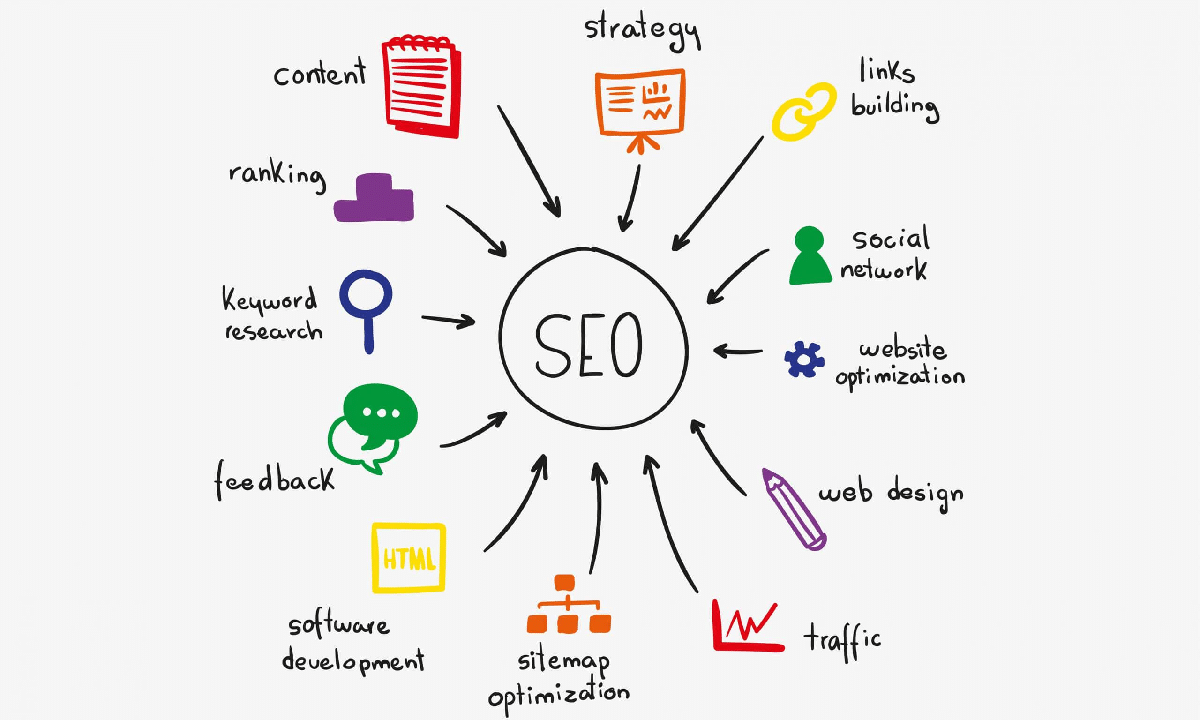SEO-friendly content is the content we write in a way that helps search engines understand its content, what your user’s query is, and what people will learn from your article. Once you know what steps of on-page optimization to take you will be in a better position to create better SEO-friendly content. In-fact, adding on-page optimization steps before creating the content will not complicate the content production process but vice versa. The benefits are worthwhile as the on-page optimization steps will have a positive effect on the performance and growth of your website in the long run. It is true to say that the impact of on-page optimization on the overall performance of your online business and website is more than 50% of the overall optimization of your website.
To me, there is a very common mistake or misconception over the on-page optimization and that is, what it is and how it is improved? The answer to this complex question is; the meta details of the page you are publishing content on should compliance with the guidelines of the search engine. There must have one focused keyword on the whole page. Yes, you can use the derivatives of that focused keyword but again the main focus will remain on the focused keyword.
Today we will go through 6 simple steps of on-page optimization to create SEO friendly content and provide more value to the search engine and your audience.
Create a Well-Optimized Meta Title
The first and foremost thing is that the article title you use is not necessarily the title that will appear in search results. Please note that this article has two titles: the H1 tag displayed on the page and the Meta title tag shown in the search result snippet.
The Meta title will make your content public. Therefore, this is usually the main information you use to determine what results I get, especially when searching for on-page optimization on mobile devices. As the main keyword of this post is on-page optimization so we will use it in the Meta Title for sure. The use of the main keyword in the Meta Title is the first compliance of search engine guidelines. This existence will help appear the post in the search results.
Create a Catchy H1
No doubt, the Meta Title, and H1 tag have different roles in on-page optimization. If you want to add more creativity and attraction to your post you can add a catchy H1 tag to your post. Here is a point to be noted that the allowed word count length of the H1 tag is larger than the word count length of the Meta title tag.
In view of on-page optimization of your webpage, when writing H1 headings, please keep the following in mind:
- Create a unique H1. This way, users won’t be confused between similar pages on your website.
- Use words such as “how,” “why,” “what,” and “where”.
- This way, you can help people understand what they will find in the next page-guidelines.
- And, how-to articles get twice as many visits as other types.
Optimize the Meta Description
The Meta description is what the user sees under the title of the Google results page. If you enter the content of Meta Description carefully, this may be a good way to attract visitors to click on a link of your website by using this smart step of on-page optimization. There are many things said about the Meta Description. But, if we keep ourselves simple and to the point then there are few things to take of on-page optimization. The simplest things are as following;
- Use focused keyword and at the beginning of the Meta Description.
- Try to keep the content unique and relevant to the post.
- Keep the content of Meta Description for about 1 to 2 sentences (140 to 160 characters max).
- Although there is no limit to the length of the description in the Meta tag, the search results are usually trimmed to fit the device’s width.
- Structure Your Content and Make it Readable
It is something to remember, always, is that well-structured content is an important part of high-quality content. When you are going to follow on-page optimization always remember that SEO-friendly content has twofold benefits. The first benefit is that search engines love well-structured content and help rank the content high in the search engine ranking pages. The second benefit of well-structured content is that it is more absorbable to the reader. Once the content is well absorbed it will get more sharing and reach.
Closed captions make it easier to scan content, which makes reading easier. According to our research, 36% of articles with H2 + H3 tags perform better in traffic, sharing, and backlinks.
Add Visual Content
People will only remember 10% of the information they hear, but if they see the information visually, this number is already 65%. This is how our brain works. By using visual effects in your content, you can provide visitors with an idea to remember and share.
- Different images on the page help better convey information to users and better distribute its content. According to Twitter, the number of reposts of photo tweets increased by an average of 35%. These images are not only beautiful but also an important part of a successful blog post.
- You can also use infographics, checklists, templates, and other visual content types to attract viewers faster and more.
Make Your URL Readable
URL, universal resource link, is an important factor among other factors of on-page optimization. Although, sometimes it is considered that the keywords in the URL are a secondary factor that is wrong. As we said earlier, the focused keyword told the search engine about the direction of the content. Similarly, if we use keywords in the URL it will help search engines to properly index the post under one single umbrella of a keyword. Thus writing high-quality URLs that clearly describe the page’s content will help readers, as well as the search engine, understand your content.
It is also important to note that sometimes when the link does not have an anchor text, the URL itself will be used as anchor text. In other cases, the user can hover over the text to view the link. The readable URL explains what it contains.



Top eCommerce Plugins for Creative Agencies to Sell Digital Products
Since blockchain technology is public, how are users’ identities protected?